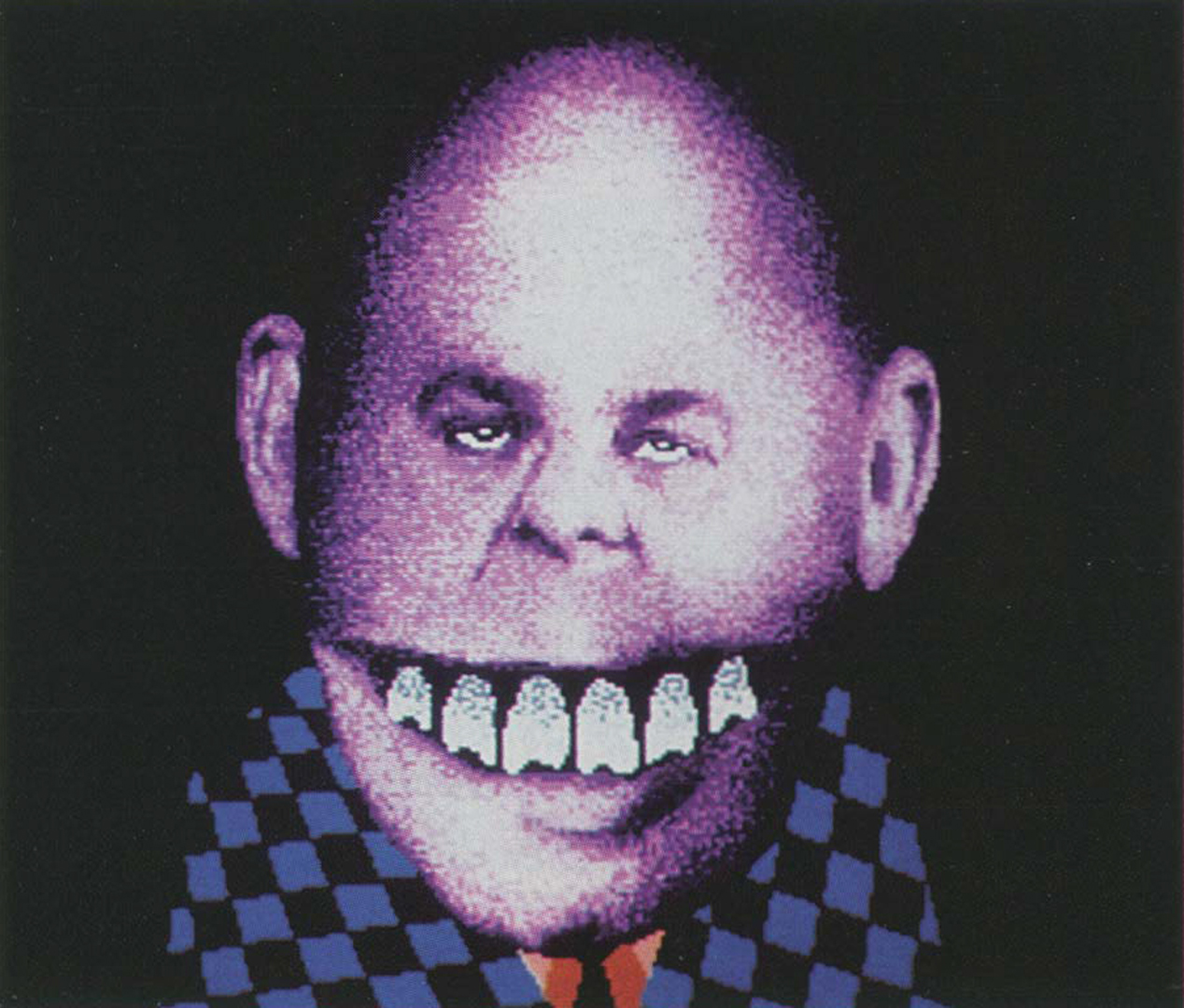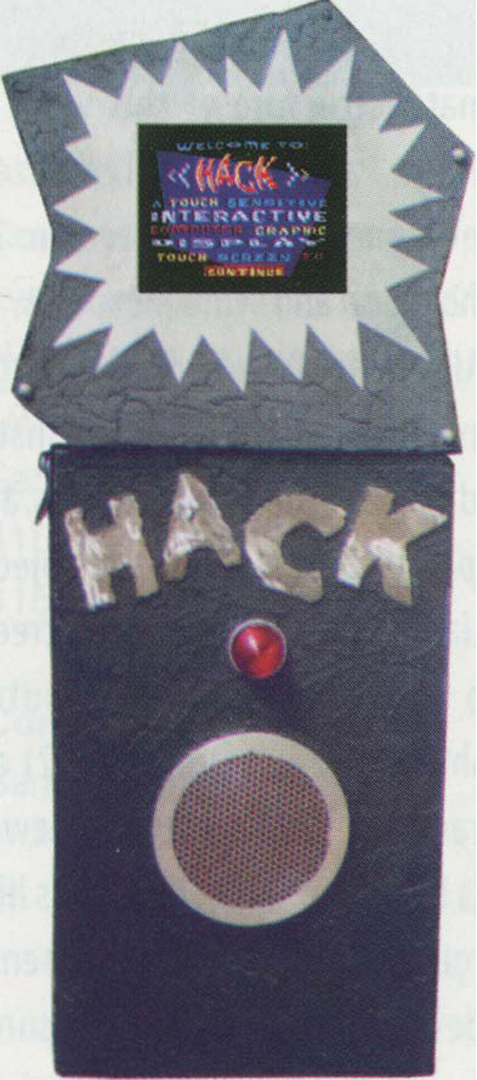Ian Haig: Hack
Artist(s):
Title:
- Hack
Exhibition:
Category:
Artist Statement:
Hack is an interactive work informed by the electronic terrain of pop culture and the cultural history of comic books, cartoons, and computer games. The work is presented and designed in the guise of a simple computer game and carnival amusement display, a site that both culturally and historically has long been associated with notions of ‘interactivity’ in different ways. Therefore, one of the intentions of the work is to re-define our notions of the interactive in technological-based art, while looking over our shoulders to the video arcade and carnival sideshow.
The other cultural reference that the work draws upon is the Frankenstein monster, which serves as a central theme in the work: as a body made up of other body parts, a head made out of different heads, part robot, part human, part mutant, part machine… digitized, scanned, and robbed from the data banks of pop culture.
The computer game itself is often dismissed as the territory of pop culture- not worthy of serious consideration in the realms of art and interactive media. However the computer game and video arcade can reveal not only the fundamentals of many simple interactive concepts, but more important the video arcade has seen the standardization of certain concepts of interactivity emerge between user and computer in contemporary popular culture. Simultaneously simplistic/restrictive/limiting and addictive/involving/entertaining … whether its saving the planet from that alien invasion or searching for that elusive pot of gold.
For the generation that has grown up with Nintendo and Atari, the simple concepts of interactivity found in your average computer game appear almost second nature, like riding a bike. Their ideas and functions are instantly picked up on and related to, in a sense having become’naturalized.’ With this in mind, Hack (in a quite simple way) attempts to draw on and cast one’s eye not to the simplicity of the computer game, but rather to look at concepts in computer-interactive art through the eyes of the video arcade: the cultural site, where a particular computer-interactive language is currently being written as we speak and encoded into the imagination of a generation.
Consists of multiple sections of a computer-generated head. The objective is to locate the central nervous system, or brain, by working through a maze of different sections of digitized heads. The user must deconstruct the display/game, through a process of elimination, by working through the different graphic variables. In very simple terms, this is just like a computer ‘hacker’ deconstructing the code of a particular program.
Hack is the first in a series of computer interactive artworks in the guise of simple computer-graphic games, which seek to close the gap between art, graphics, animation and computer/video games, using the interactive potential of the computer.
Hack proposes a design prototype for an interactive computer interface away from mouse-driven, text-based applications/presentations and a break with the standard tools associated with authoring/ interactive multimedia software.







